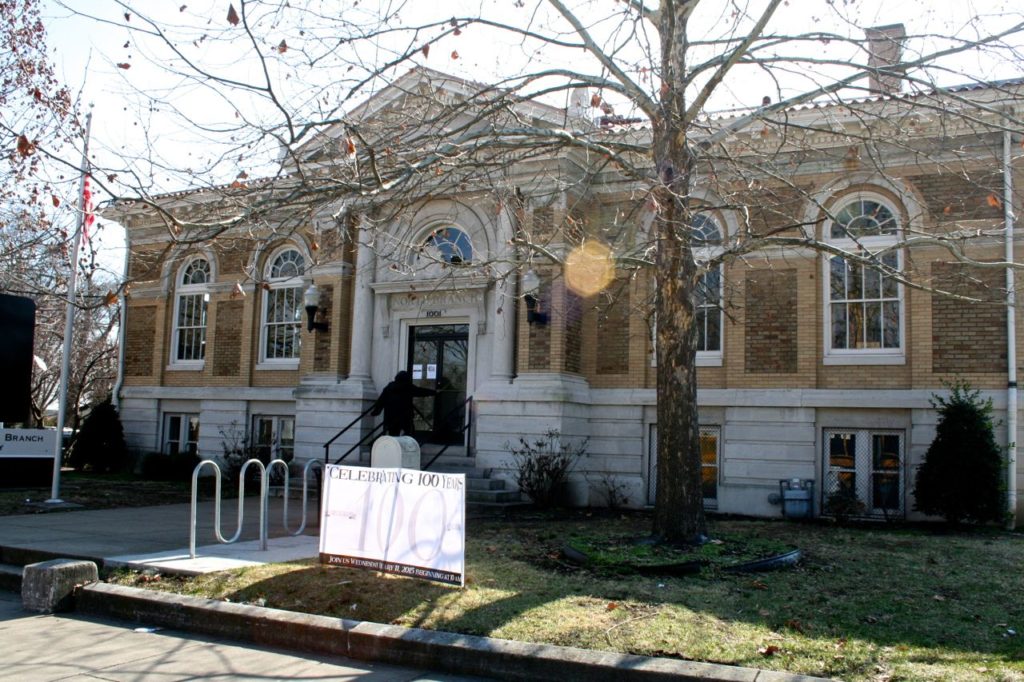
Nashville’s North Branch Library celebrated its 100th anniversary Wednesday. It is one of the few libraries built by philanthropist Andrew Carnegie still in operation.
Historian David Ewing told a small crowd of nearby residents and schoolchildren that the people of North Nashville lobbied hard to get a Carnegie Library in their neighborhood a century ago.
Ewing said they made the case that it would serve blue-collar workers and two streetcar lines. To laughter from the audience, Ewing described how the group boasted only needing two daytime police officers and six on patrol at night, compared to the 152 who kept an eye on the rest of the city.
Evidently, it was a convincing argument.

The building that opened in 1915 has been renovated, but never expanded. By modern standards, the library is quite small — there are only two full-time librarians on staff. But it operates multiple story times each week, and its large bay of computers is so popular patrons have to make reservations.
A generation before the North Branch opened, public libraries were relatively rare. That bothered Andrew Carnegie, one of the great industrialists of America’s Gilded Age. He’d started out a poor Irish immigrant in Pennsylvania. At 13, he was put to work in an Allegheny cotton factory. From that point on, his only education came in the form of books loaned to him by a local retiree.
Carnegie wanted to extend the same helping hand — access to books — to as many people as possible. Starting in 1881, he spent $50 million of his personal fortune building library buildings with a handful of stipulations: the land must belong to the local government, there must be room for expansion, and the community must pay for books and the cost of operating the library.
From 1908 on, Carnegie’s staff also recommended an interior layout, which the North Branch follows closely. There should be a basement level with a meeting space (the North Branch still uses the original wooden stage). Upstairs should feature a central librarian’s desk flanked by a reading room for adults on one side and one for children on the other.

Tennessee cities had only gained the authority to use tax money on libraries in 1897. The following year, Nashville built its first library. Soon after, Carnegie added four public libraries in the city, two of which still operate as the North and East branch locations of the now extensive Nashville Public Library system.
Carnegie also gave the money to build two academic libraries in Nashville. The one built for Peabody College of Teachers is still operated by Vanderbilt as the Peabody Library. Fisk University now uses its Carnegie building as an academic space; the library moved into a larger facilities in 1930, and again in 1969.


